Answer these simple questions and we will find you the BEST prices
Which type of solar quotes do you need?
It only takes 30 seconds
100% free with no obligation

Get Free quotes from insulation specialists near you

Save money by comparing quotes and choosing the most competitive offer

The service is 100% free and with no obligation
- GreenMatch
- Insulation
- Wall Insulation
- External Wall Insulation
- External Wall Insulation Thickness
How to Find out the Right External Wall Insulation Thickness

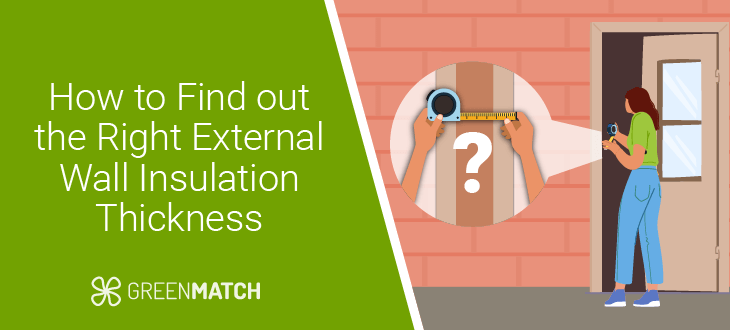
- External wall insulation can help you save between £140 to £700 on your energy bills by reducing heat loss by up to 35%.
- If you are insulating 25% or more of your external walls, building regulations state that the U-value should be 0.3W/m2k or lower.
- It is possible to install 50mm insulation, which can reduce costs. However, 100mm insulation offers more significant long-term savings and better thermal efficiency.
- 100mm of insulation can reduce energy bills by up to 50%, while 50mm thick insulation only reduces energy bills by up to 30%.
Exterior wall insulation is one of the most effective ways to dramatically reduce heat loss in your home, potentially cutting down energy escape by up to 35% and slashing your carbon footprint by 410 to 2,100 kg/CO2 annually. With the right thickness, high-quality insulation can save you between £140 and £700 on energy bills—a crucial consideration as the cost of living continues to rise in the UK.
Getting the external wall insulation thickness right is key to unlocking these benefits. While it might seem tempting to choose thinner insulation to cut costs, doing so can lead to problems like thermal bridging, cold spots, and moisture issues. Properly installed, thick insulation also safeguards your home's structure by minimising condensation and dampness.
Choosing the correct external wall thickness is essential for maximising energy efficiency, comfort, and your home's longevity. This article will help you determine the optimal insulation thickness for your external walls, factoring in climate, regulations, and your property's specific needs. By understanding these elements, you'll be better equipped to make informed decisions that enhance your home's thermal performance and sustainability.
Ready to transform your home’s energy efficiency with external wall insulation? Let GreenMatch make it easy for you! Fill out our quick 30-second form, and we’ll connect you with up to four free quotes from trusted local specialists tailored to your needs and budget. No hassle, no obligation—just expert solutions to keep your home warm and your energy bills low. Click below to get started!
- Describe your needs
- Get free quotes
- Choose the best offer
It only takes 30 seconds



How thick should external wall insulation be?

External wall thickness typically ranges between 50mm and 100mm to achieve a U-value of 0.3W/m2K, as required by UK building regulations. Several factors influence the insulation thickness needed, including existing insulation, wall thickness, and the type of insulation material used.
Thicker walls generally have a lower U-value, which means they offer better thermal efficiency. For example, a 600mm thick solid wall has a U-value of 1.6W/m2K, while a 300mm thick wall has a U-value of 2.78W/m2K. The goal of adding external insulation is to reduce the U-value, thereby improving thermal efficiency.
Most solid walls in the UK are around 215mm thick, so it's essential to measure your external wall thickness accurately. You can determine this by measuring the thickness of your exterior door or window casings. This, along with the dimensions of your living area, will help you choose the appropriate insulation thickness.
Materials used for insulation also play a crucial role in determining the thickness required. Insulation materials have an R-value. An insulation R-value explains the effectiveness of a material at preventing heat flow.
A higher R-value means better insulation, allowing you to achieve the desired U-value with less thickness. Conversely, materials with a lower R-value may require greater thickness to meet the U-value target.
What is the minimum insulation thickness for exterior walls?
In the UK, building regulations do not specify a minimum or maximum thickness for external wall insulation. Instead, they focus on achieving a specific U-value. To achieve the recommended U-value of 0.3W/m²K and effectively reduce your energy consumption and carbon footprint, it is advisable to aim for a minimum external wall insulation thickness of 50mm. Anything less may not sufficiently improve the wall's thermal efficiency to make a noticeable impact.
While 50mm external wall thickness can lower initial costs, opting for 100mm insulation is more effective. With 50mm thick insulation, you can see a 30% reduction in energy bills, whereas 100mm thick insulation could reduce costs by up to 50%.
Although thinner insulation appears more cost-effective upfront, investing in thicker insulation offers more significant long-term savings. Typically, upgrading from 50mm to 100mm insulation adds only about £200 to the overall cost, making it a worthwhile investment.
Thinner insulation also poses a higher risk of thermal bridging, leading to cold spots and uneven U-values across your home. With 100mm insulation or more, you can better ensure uniform thermal efficiency throughout your property.
However, it's essential to stay within 100mm in external wall thickness. At this level, the insulation's thermal efficiency reaches its peak, and any additional thickness offers diminishing returns, resulting in unnecessary costs without significant benefits.
Factors that will affect the external wall insulation thickness
When deciding on the right external wall thickness for external wall insulation, it's essential to consider several factors to achieve the best thermal performance and energy efficiency. While building regulations provide general guidelines, other factors can significantly affect the insulation thickness required for your property.
Insulation material
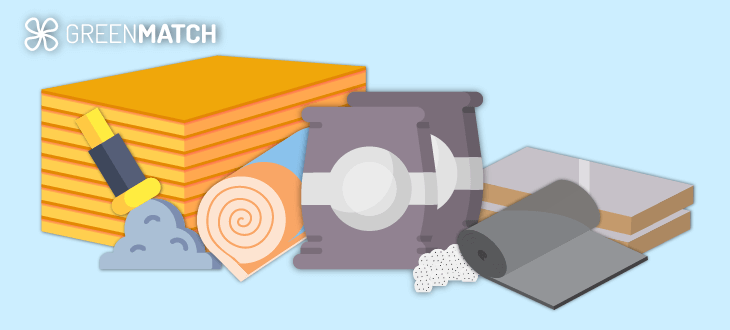
The type of insulation material used is essential in determining the required external wall thickness. Materials like Polyisocyanurate (PIR) or Extruded Polystyrene (XPS) have higher R-values, providing better thermal resistance per unit of thickness. Conversely, materials with lower R-values, like mineral wool, will need a thicker application to meet the same thermal performance standards.
Climate
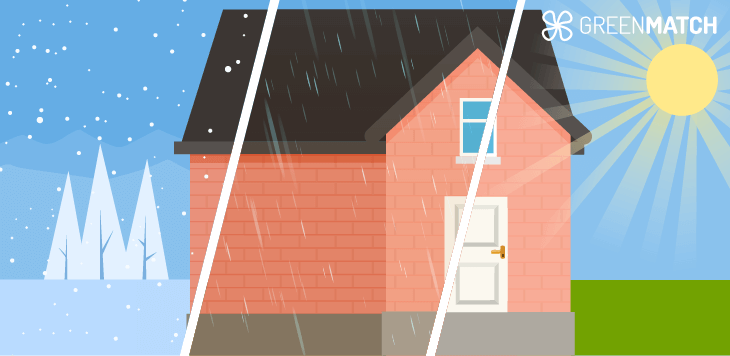
In colder regions where temperatures drop significantly during winter, thicker insulation is often necessary to maintain a comfortable indoor environment and reduce energy consumption. Homes in these areas require better protection against heat loss, so choosing an insulation thickness that can effectively combat the colder temperatures is essential.
Age of your home

Your home's age and structure also influence the required insulation thickness. About 97% of homes with solid walls have poor or no insulation and therefore require thickener insulation to meet the U-value. Newer homes may have insulation, so the additional thickness required may be less.
Energy efficiency goals
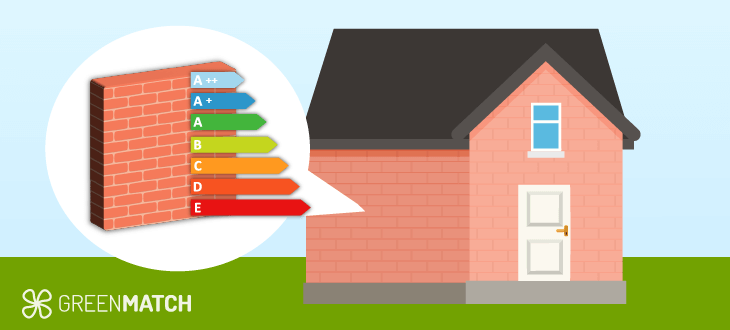
The thickness of the insulation will depend on your specific energy efficiency goals. Invest in thicker insulation if you want to reduce your energy bills and carbon footprint significantly. Thicker insulation provides better thermal performance, leading to more significant long-term savings and a more sustainable home.
Budget

Thicker insulation generally provides better energy efficiency but comes with a higher cost. Therefore, your budget will naturally influence the thickness you can afford. Considering the initial investment versus the long-term savings in energy costs is essential, as thicker insulation can offer significant returns over time.
By carefully considering these factors—insulation material, climate, age of the home, energy efficiency goals, and budget—you can determine the optimal external wall thickness for your property, ensuring maximum thermal efficiency and comfort.
How can you establish the right external wall insulation thickness?
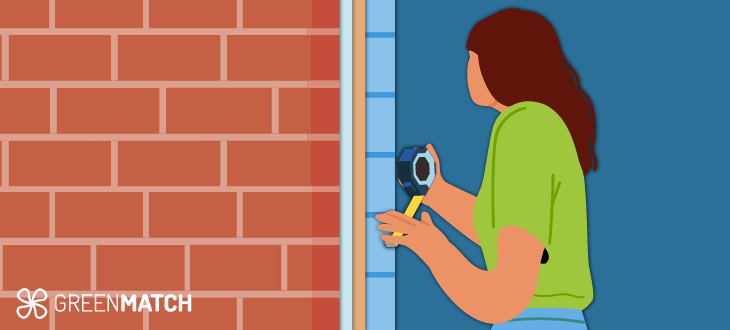
Establishing the right external wall thickness is crucial for optimising your home's thermal performance and energy efficiency. To determine the appropriate thickness, you'll need to consider several key factors: the type of insulation material, the local climate, the age and structure of your home, and your specific energy efficiency goals.
- Insulation material
- Climate
- Age of your home
- Energy efficiency goals
- Your budget
- Required U-value
Considering the complexity of these factors, it is highly recommended to consult with a professional installer. An expert can accurately assess your home's needs, recommend the most suitable insulation materials, and determine the optimal external wall thickness required to achieve your energy efficiency goals while complying with building regulations.
At GreenMatch, we connect you with the best specialists in your area. By filling out our quick 30-second form, you'll receive up to four free quotes with no obligations or hidden fees. Take the first step towards a more energy-efficient home - click below to learn more.
- Describe your needs
- Get free quotes
- Choose the best offer
It only takes 30 seconds



FAQ
An external insulation layer of 50mm can offer some thermal improvement, but it might not be adequate to meet the UK building regulations requirement of a U-value of 0.3W/m2K. It is recommended to have an external wall insulation thickness of 100mm to achieve better thermal efficiency and reduce the U-value by 0.3W/m2K.
The thickness of exterior walls with insulation depends on the original wall, which is typically around 215mm in the UK. Added insulation can increase this by 50mm to 100mm. The total thickness includes the original wall, the insulation layer, and any external finishing, such as render or cladding.
The minimum thickness for wall insulation varies by material and building regulations but typically starts at around 50mm to meet basic thermal efficiency standards. However, thicker insulation may be required to achieve a U-value of 0.3W/m²K or lower, as UK building regulations recommend.

Caoimhe is an experienced content writer and researcher who is passionate about providing accessible information to every reader. With a background in English literature and Sociology, she combines the two disciplines to create cohesive, well-thought-out, and well-informed pieces.
We strive to connect our customers with the right product and supplier. Would you like to be part of GreenMatch?

